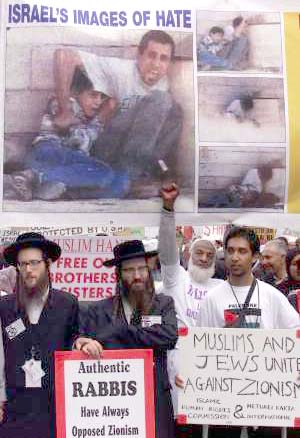
This essay is cross posted by Hadar Sela at BBC Watch.
The mainstream media – of which the BBC is part – claims to deal in news rather than fiction or folk-lore. News is based upon what happened in reality and is necessarily supported by factual evidence, with the provision of that evidence being the responsibility of those who circulate the story.
One of the issues facing media outlets in the digital age is speed: the competition with their peers to get a story out fast and first. That priority means that increasingly we see the supporting factual evidence behind a story being neglected, to the extent that – as the BBC now knows only too well – wholly or partly unproven stories are sometimes knowingly run.
An unproven story not based entirely upon verifiable evidence becomes fiction which often makes up part of a narrative. Add to that the strand of Western culture according to which all narratives are equal and facts are often an optional extra because cultural and moral relativism mean that objective judgements of fact and fiction, truth and untruth, right and wrong, cannot be made – and we are left with a situation in which news stories often play more to the audience’s emotional reaction than concentrating on communicating a concrete message of information.
Emotional reactions nurture judgement, but when that judgement is not based on facts – as fiction and narratives are not – it has the potential to be dangerous. A lethal narrative is an unproven, unsubstantiated story which is used – not necessarily by its creator – directly or indirectly to incite against and/or justify or ‘contextualise’ violence against the story’s supposed antagonist.
Such narratives are by no means confined to the sphere of the Arab-Israeli conflict, but in the Middle East they abound. Previously, we highlighted the so-called ‘Jenin massacre’ as an example of a lethal narrative still appearing over a decade later on the BBC website without appropriate correction or amendment. Another well-known example is the case of Mohammed Al Dura which is recorded chronologically here.
Although – over 12 years on – the facts surrounding Mohammed Al Dura’s death remain unproven, the narrative of Israelis as killers of an innocent child has been circulated and promoted worldwide –not least by the Western media – with lethal results.
That narrative – among other things – fuelled the second Intifada, was used by Al Qaida in a recruiting video, served as a pictorial backdrop during the beheading of the American journalist Daniel Pearl in 2002 and was adopted by Western journalists such as Catherine Nay who stated that “The death of Mohammed cancels, erases that of the Jewish child, his hands in the air before the SS in the Warsaw Ghetto”.
That narrative was also promoted extensively at the infamous UN-organised ‘Durban I’ conference in 2001 (where the boy’s father, Jamal Al Dura, was a featured speaker), which served as a springboard for the organized campaign of delegitimisation and cognitive warfare upon Israel.

Protest march in Durban, South Africa, August 31st, 2001, organised to coincide with the opening of the UN Racism Conference.
Given the volatile nature and violent results of the Al Dura narrative, has the BBC handled the story with the caution it obviously deserves?
A search of the BBC’s website turns up an article from October 2nd 2000 entitled “Boy becomes Palestinian martyr” which repeats the narrative as put out in the original France 2 report. Later in the article, Israeli reactions are quoted – and dismissed. No appendage appears to indicate that the circumstances were in fact not as clear-cut as the original report suggests. Another article from October 3rd 2000 repeats much of the same narrative and also includes no amendment.
On November 18th 2000 the BBC broadcast a programme by Jane Corbin entitled “When Peace Died” which focused heavily on the Al Dura story. The programme’s synopsis still appears on the BBC website and carries these words: [emphasis added]
“Mohammed al-Durrah, the boy from Gaza, shielded by his father but still dying under a hail of bullets fired by Israeli soldiers..”
A transcript of the programme – available here – shows that Corbin clearly regards the brutal lynching of Vadim Norzich and Yossi Avrahami in Ramallah on October 12th 2000 as a reaction to the Al Dura case, bringing in a PA official to support her hypothesis.
00.21.35
Jane Corbin
The Israelis destroyed the police station where the Palestinian mob had exacted their revenge for what happened in Gaza.
00.21.44
ABU ALA
Palestinian Negotiator,
Oslo Accords
It’s a reaction of anger. I’m not giving an excuse but this is really, it is the Palestinians who are angry about the Israeli way to killing the Palestinian. Up to the moment there are about two hundred people who’s been killed by the Israelis and more than eight thousand are wounded.
The programme’s synopsis also states that:
“Vadim and his colleague found themselves surrounded by an angry mob. Ominously a poster of Mohammed al-Durrah and his father was prominently displayed.”
Given, then, that the BBC obviously recognized the dangerous potency of that image as far back as October 2000, it is – to say the least – odd for it to select the same picture to illustrate subsequent BBC articles. However, a BBC ‘Timeline’ of the second Intifada – last updated in September 2004 – uses that image, as does the entry for the year 2000 in the BBC’s feature entitled “A History of Conflict“.


An article produced by the BBC ahead of the Israeli disengagement from Gaza in 2005 also resurrects the Al Dura story, albeit this time with more careful wording, and a 2007 article entitled “Killing of Palestinian boy re-examined” goes some way towards acknowledging that the narrative as initially promoted by the BBC and other media organisations is contestable.
However, those earlier articles from the year 2000 still remain available on the BBC website with no correction or amendment – a state of affairs made all the more egregious by the fact that in 2010 the BBC upheld a complaint against another of its programmes in which it was claimed that “In September 2000, 12 year old Muhammad al-Dura was shot dead by Israeli soldiers”.
On behalf of the BBC Editorial Complaints Unit, Fraser Steel wrote:
“…even in the absence of an “official” Israeli Government position on the shooting of Al-Durrah, the fact remains that many people believe that the bullets which killed him could not have come from Israeli positions. The Director of the Israeli Government Press Office believes that “there was no basis for the accusations levelled against Israel”. He is quite clearly not alone in this view, as evidenced by the recent trial of Philippe Karsenty to which your complaint refers, who had expressed the view that footage of the incident had been faked. An internet search shows a significant number of people similarly believe that the IDF could not have killed Al-Durrah (and some who believe he was not killed at all).
In the light of these points, I think that, in stating as fact that Muhammed Al-Durrah was killed by the Israeli Army, the programme went beyond what could be said with certainty. …
I hope you will accept my apologies, on behalf of the BBC, for the breach of standards in relation to accuracy which we have identified.”
Clearly, that ruling needs to be applied to all other BBC material on the subject – including all archive material on its website. The failure to do so until now makes the BBC compliant in the promotion of one of the more lethal narratives known.
Share
